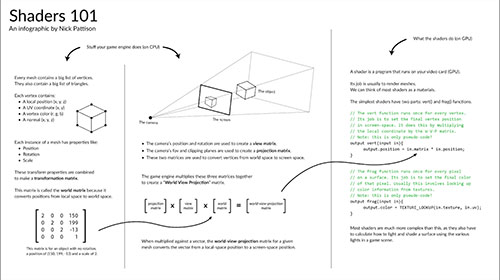Blender scripting: generating meshes from bones
Introducing my first Blender script: a tool to generate low-poly meshes from armatures. The goal was to speed up the process of prototyping simple character rigs, and to learn more about Blender and Python. The results aren't aesthetically amazing, but the script provides a very quick starting point.
This task proved challenging as most resources out there on Blender are now outdated, and I've found the API to be a little obtuse. Of course, as I experiment more, I'm sure it'll make more sense with time and practice. Here's the code if you want to try it out yourself:



